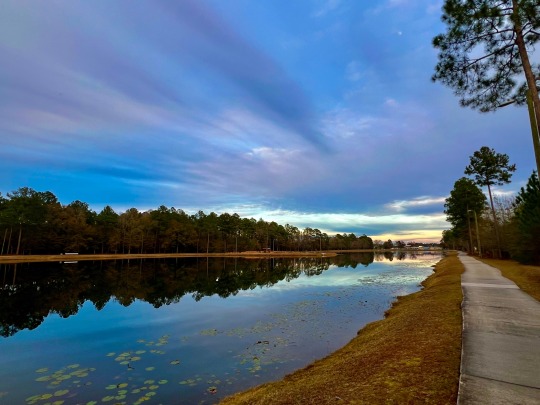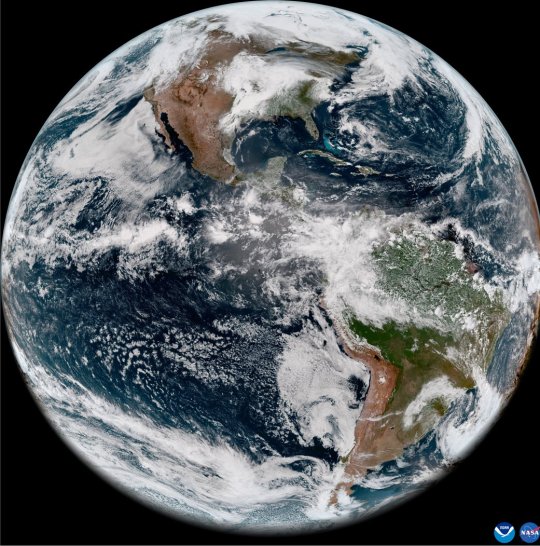#Weather Patterns
Text
Sun will come out

I gather Decarlo had a better grasp on cover design, placement of what is selling the product here, what is going to catch the eye amidst the crowded newsstand, than Goldberg. Then again, I can picture in the always shifting around editorial line from Archie, the placement coming from on editorial high -- which one for which direction I do not know.
#Archie Comics#Archie Andrews#Chuck Clayton#Veronica Lodge#Betty Cooper#Nancy Woods#Cheryl Blossom#Jughead#Beach#Lifeguard#Weather patterns#Swimsuits#Stan Goldberg#1980#Dan Decarlo#1984#Seagulls
6 notes
·
View notes
Text
The Chilling Effect of the Polar Vortex: A Winter Phenomenon Strikes Regina, Saskatchewan, and Beyond
Shaina Tranquilino
January 20, 2024

As winter settles in across the Northern Hemisphere, intense cold snaps and frosty weather systems are not uncommon. However, every few years, a particularly extreme weather event occurs that captures headlines worldwide – the polar vortex. Recently, this frigid phenomenon has unleashed its icy grip on numerous regions, including Regina, Saskatchewan in Canada. In this blog post, we will explore what exactly the polar vortex is, how it affects our lives, and why it's important to understand this chilling meteorological occurrence.
Understanding the Polar Vortex:
The polar vortex is an area of low pressure situated near the Earth's poles. It is characterized by strong winds circulating counterclockwise around a center of extremely cold air. These winds form a tight spiral pattern high up in the atmosphere known as the jet stream.
Normally confined to the Arctic region during winter months, occasionally these powerful winds weaken or shift southward due to complex atmospheric dynamics. This results in a sudden intrusion of bitterly cold arctic air into lower latitudes — a phenomenon experts refer to as a "polar outbreak" or "polar vortex event."
The Impact on Regina and Beyond:
Regina, located in central Canada's prairies and often referred to as one of the coldest cities in the country, experienced firsthand the brutal effects of the polar vortex. As temperatures plummeted well below freezing point (reaching as low as -50°C), everyday life ground to a halt. Transportation was disrupted or delayed, and residents were advised to stay indoors unless absolutely necessary.
But Regina wasn't alone; other parts of North America also fell under the influence of this winter nightmare. States such as Texas faced unprecedented snowfall and record-breaking low temperatures that crippled infrastructure unprepared for extreme winter conditions. Similarly, Europe witnessed heavy snowfalls and sub-zero temperatures, causing travel chaos and affecting millions of people.
Coping with the Vortex:
During a polar vortex event, it is crucial to prioritize safety and take appropriate measures to protect oneself from the extreme cold. Staying indoors, dressing in layers, ensuring adequate heating, and avoiding unnecessary exposure are all vital precautions. Furthermore, maintaining communication with neighbours, especially vulnerable individuals such as the elderly or those without proper shelter, becomes essential.
Understanding Climate Change's Role:
While it may seem counterintuitive that global warming could cause severe cold spells like the polar vortex event, climate change plays a role in its occurrence. The melting Arctic ice due to rising global temperatures weakens the jet stream, causing it to become wavier and allowing frigid air masses to escape the poles more frequently. As a result, these events can intensify due to climate change but remain sporadic and unpredictable.
The recent polar vortex event has left Regina and various parts of the world shivering in an icy grip. Understanding this meteorological phenomenon helps us recognize its impact on our daily lives while appreciating the importance of preparedness during such extreme weather events. By taking necessary precautions and fostering community support, we can navigate through these frosty times together until warmer days return.
Note: It is important to keep up with local news sources and official guidelines regarding any current or future polar vortex events for accurate information and safety instructions in your specific region.
#polar vortex#winter chill#cold snap#chilling effects#extreme weather#winter phenomenon#freezing temperatures#arctic blast#cold wave#weather impact#climate change#frozen outdoors#cold front#winter wonderland#bundle up#weather patterns#frigid conditions#ice storms#snowfall#winter preparedness#stay warm
4 notes
·
View notes
Text

Combing the hair of angels …
4 notes
·
View notes
Photo


#GOES 18#GOES satellite#Earth#climate#weather patterns#space#astronomy#astrophotography#religion is a mental illness
21 notes
·
View notes
Quote
Some people are more vulnerable to climate impacts than others. Developing countries and communities are often the hardest hit. Many already experience devastating destruction caused by climate change. For example, 2022’s summer of disasters saw Pakistan’s flooding killing thousands and leaving millions without a home. Droughts in Somalia and Ethiopia caused food and water shortages, leaving many people facing hunger and famine. Sudden extreme weather events aren’t the only threat. Climate impacts happen slowly too, but the results can still be devastating. Changes to weather patterns means it becomes harder for communities to count on rains coming to grow crops. And rising sea levels mean thousands in coastal communities risk permanently losing their homes, as huge areas of land go underwater. None of this is a far-flung future; loss and damage is happening now.
‘Loss and damage: who foots the bill for climate destruction?’, Greenpeace
#Greenpeace#Loss#damage#climate impacts#Developing countries#devastating destruction#climate change#2022 Pakistan floods#Horn of Africa#droughts#Somalia#Ethiopia#hunger#famine#extreme weather events#weather patterns#coastal communities
4 notes
·
View notes
Text
2 notes
·
View notes
Text
2 notes
·
View notes
Text
Wind and Weather Considerations in Building Design: Safeguarding Structures Against the Elements
In the intricate process of building design, wind and weather considerations play pivotal roles. As we delve into the Wind and Weather Considerations in Building Design, it becomes clear that architects and engineers must factor in the potential impact of the natural elements from the initial sketches to the final construction. This article will outline why integrating meteorological factors is…

View On WordPress
#architectural resilience#building design#climate analysis#design harmonization#environmental footprint#moisture intrusion prevention#passive strategies#renewable energy sources#structural integrity#sustainable design#weather patterns#weatherproofing materials#Wind considerations#wind load calculation
0 notes
Text

#prepping#weather#quick tip#emergencies#news#media#situations#weather patterns#news stories#prep#preparedness
0 notes
Text
How does one track bird migrations and anticipate their arrival in a particular location?
Bird migration is an incredible natural phenomenon that occurs twice a year, as birds travel from their breeding grounds in the north to their wintering grounds in the south, and then back again. As a birder, being able to track bird migrations and anticipate their arrival in a particular location is an exciting and rewarding experience. In this article, we will discuss some techniques and tools…

View On WordPress
#anticipation#beauty#bird habitats#Bird migration#disturbance#eBird data#ethical birdwatching#flight#food availability#migration maps#nesting birds#seasonal movements#species observation#techniques#tracking#weather patterns#wonder
1 note
·
View note
Text
Logo Showdown, Shambhala Secrets, & Book Bargains Await!
Hello, my Freaky Darlings!
Holy Shit!
Mother Nature is throwing a serious bitch fit at the moment. Ten countries across the globe have been hit by severe flooding in the last twelve days, and this weekend, the Western Cape was smashed by massive waves that some have been comparing to a Tsunami, okay, a small Tsunami, but still a Tsunami! We don’t get shit like that here. Add to that, angry Mother…

View On WordPress
#Anthologies#Book Discounts#Book Sales#Climate Change#Climate Crisis#Environmental Awareness#Environmental Impact#Extreme Weather#Freaky Files#Graphic Design#Logo Design#Logo Voting#Mother Nature#Mystical Cities#Natural Phenomena#Nature&039;s Fury#Shambhala#Short Stories#Travel Mysteries#Weather Patterns#Weather Updates
1 note
·
View note
Text
Understanding Climate Anomalies: A Guide to Unusual Weather Patterns
:
Climate anomalies refer to unexpected deviations from typical weather patterns. These anomalies can manifest in various forms, such as heatwaves, prolonged droughts, intense storms, or extreme cold snaps. Understanding these anomalies is crucial for governments, scientists, and individuals alike, as they can have significant impacts on ecosystems, agriculture, and human activities.
To…

View On WordPress
#climate change#climate modeling#Data Analysis#environmental impact#mitigation strategies#weather patterns
0 notes
Text
Misread News Item #2, The Earth
I misread the following news title today:
“Earth Has Tilted 31.5 Inches. That Shouldn’t Happen.”
– Popular Mechanics, July 13, 2023
I really thought for an instant that the sentence went as below. I was quite worried for a bit. Wouldn’t climates and weather patterns be affected Alaska could become the new North Pole. The new one, Alaska, would never melt from global warming. Santa Claus wouldn’t…

View On WordPress
#apocalyptic#Chef Paul#climate#Comic Chef#cookbook#global warming#misread#murders#news#North Pole#recipes#Santa Claus#USA#weather patterns#workshop
0 notes
Text
Weather in India: A Kaleidoscope of Diversity
Introduction:
India, a land of immense geographical and cultural diversity, also boasts a fascinating range of weather patterns. From the snow-capped peaks of the Himalayas in the north to the tropical beaches of the south, the weather in India is as diverse as its people. In this blog, we will take a closer look at the various climatic zones and weather phenomena that shape the Indian subcontinent throughout the year.
The Monsoon Marvel:
One cannot talk about the weather in India without mentioning the monsoon season. The monsoons play a vital role in the country's agriculture and are eagerly awaited by farmers and city dwellers alike. Lasting from June to September, the monsoons bring much-needed rain to the parched land, rejuvenating rivers, lakes, and forests. The southwest monsoon is responsible for the majority of the country's annual rainfall, and different regions experience varying intensities of rainfall.
Seasonal Variation:
India experiences four distinct seasons: winter (December to February), summer (March to May), monsoon (June to September), and post-monsoon (October and November). Each season has its unique characteristics, offering different experiences and challenges across the country.
Winter: In the northern parts of India, winter can be bitterly cold, with temperatures dropping close to freezing. However, the southern regions enjoy a more moderate and pleasant climate during this time.
Summer: Summers in India can be scorching, particularly in the central and northern regions, where temperatures often soar above 40 degrees Celsius (104 degrees Fahrenheit). Coastal areas experience more temperate conditions due to the influence of sea breezes.
Monsoon: The arrival of the monsoon brings relief from the summer heat, but it also brings heavy rainfall and occasional flooding. The western coast and the northeast region receive the highest amount of rainfall during this season.
Post-Monsoon: After the monsoons, the country enters a transitional phase. This period sees a decrease in rainfall and gradually transitioning temperatures as India prepares for winter.
Regional Variations:
The vast size of India contributes to significant variations in weather across different regions. Let's explore some of the distinctive weather patterns experienced in various parts of the country:
Northern India: The northern states witness hot summers and freezing winters, with regions like Jammu and Kashmir experiencing heavy snowfall. The Himalayas protect this region from the impact of monsoons, resulting in relatively drier conditions.
Western Coast: The states along the western coast, including Maharashtra, Goa, and Kerala, experience a tropical monsoon climate. These regions receive heavy rainfall during the monsoon season, with lush green landscapes and beautiful waterfalls.
Northeast India: The northeastern states receive substantial rainfall throughout the year, with heavy showers during the monsoons. This region is known for its breathtaking landscapes, dense forests, and diverse wildlife.
Desert Regions: Rajasthan and parts of Gujarat fall within India's arid zone, characterized by scorching summers and limited rainfall. The Thar Desert, also known as the Great Indian Desert, experiences extreme temperatures and sparse vegetation.
Conclusion:
The weather in India is a fascinating amalgamation of climatic zones, seasonal variations, and regional differences. It showcases the country's natural diversity and influences various aspects of life, including agriculture, tourism, and cultural traditions. Whether you're planning a visit to India or simply intrigued by its climatic diversity, understanding the weather patterns can help you make the most of your experience in this captivating country.
#India#weather patterns#climatic zones#monsoon#seasons#regional variations#diverse landscapes#agriculture#tourism#cultural traditions
1 note
·
View note
Text



The Rain Coat by Robert Wun
SS23 Couture
Silk-mix jacquard and embossed taffeta rain coat. Hand-beaded with over 30,000 Swarovski clear crystals. Over 600 hours of hand work.
#weather with you#rain coat#rain#fashion#runway#robert wun#swarovski#crystal#embroidery#hand embroidery#raindrops#water#umbrella#surface pattern#pattern#textiles#textile design#video#in motion#shimmering#cape#droplets#trompe l'œil#metiers d'art#savoir faire
12K notes
·
View notes